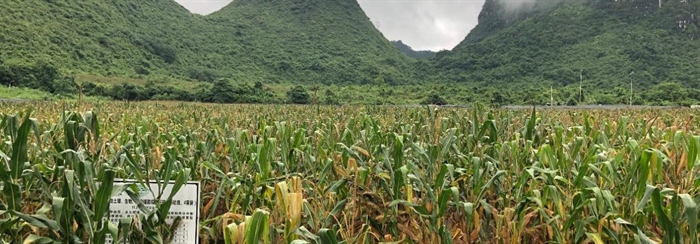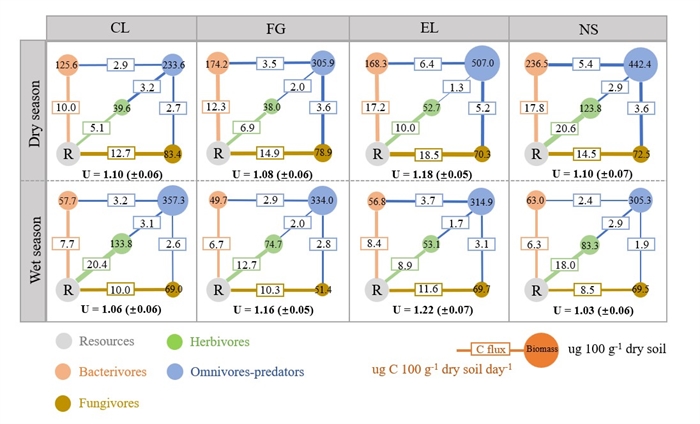Researchers Reveal Complex Soil Micro-food Webs Response to Agricultural Activities
The food web represents the intricate feeding relationships among organisms in an ecosystem that are almost ubiquitous. In soil, small food webs of bacteria, fungi, and nematodes are called soil micro-food webs. In general, agricultural activities, such as tilling, weeding, and fertilizing, can severely disrupt soil micro-food web communities. To protect soil health and improve crop yields, soil micro-food webs must maintain high complexity, biomass, and absorb more energy.
In a recent study published in Soil Biology and Biochemistry on April 6th, researchers led by Prof. WANG Kelin from the Institute of Subtropical Agriculture of the Chinese Academy of Sciences conducted a seven-year observation and control experiment in a karst region in southern China. To decrease random error, new methods for esearch on how synchronized land-use change (starting at the same time and place) influences soil ecological processes and functions were used. Now, they have revealed the complex process of changes in community composition and energy flow in soil micro-food webs under different agricultural disturbance intensities.
According to the researchers, clearing and planting maize (e.g., frequent tillage and weeding) on natural scrubland simplifies the soil micro-food web and reduces the energy that passes through the food chain. While planting forage (no-tillage) increases the soil microbial biomass and complexity of the micro-food web.
In addition, high trophic level organisms (omnivores) are conducive to maintaining soil food web structure and promoting energy absorption.
"This study improves our understanding of the mechanisms that maintain the complexity of soil micro-food webs and energy flow." said Prof. ZHAO Jie, the corresponding author of the study. "These findings also have implications for rational land use planning."
Contact: Jie Zhao
E-mail: jzhao@isa.ac.cn

The main food crop in the karst drylands of southern China is maize. (Image by LING Jiangnan)

The energetic structures of soil micro-food web in different land use. CL, cropland (maize); FG, forage grassland (tall-pasture); EL, economic forest land (walnut); NS, natural shrubland.(Image by LONG Xianwen)

Soil micro-food web co-occurrence network in different land uses. CL, cropland (maize); FG, forage grassland (tall-pasture); EL, economic forest land (walnut); NS, natural shrubland.(Image by LONG Xianwen)
Download attachments: